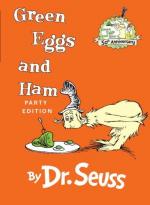|
This section contains 154 words (approx. 1 page at 300 words per page) |
The ovum, also called the egg, is the microscopic female sex cell. Its nucleus contains the chromosomes, which bear the hereditary material of the female parent.
Before birth, the ovaries of a female human contain all the eggs (ova) she will produce in her lifetime, up to 300,000. Beginning at menarche and during each normal menstrual cycle, an ovum develops in a fluid-filled cyst called a follicle. Ovulation is said to occur when the follicle ruptures and releases the egg from the ovary into the fallopian tube.
If sexual intercourse takes place, a sperm can fertilize the ovum, in which case pregnancy will result. Over the nine months of pregnancy, a single-celled ovum evolves into a fully developed human. If an ovum is not fertilized, it will be discharged through the vagina along with the monthly menstrual discharge.
See Also
For Further Study
Books
Avraham, Regina. The Reproductive System. New York: Chelsea House, 1991.
|
This section contains 154 words (approx. 1 page at 300 words per page) |


